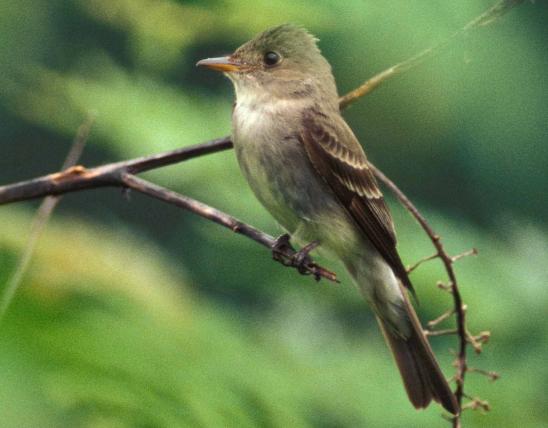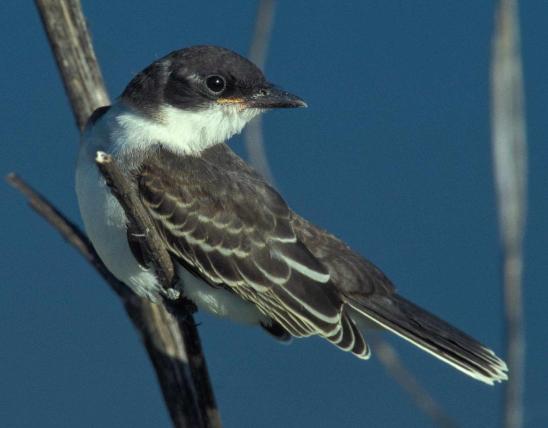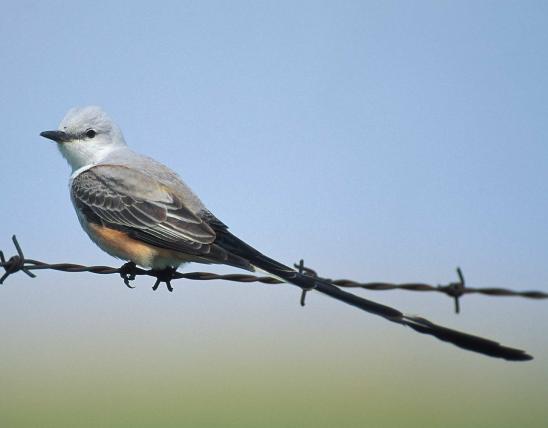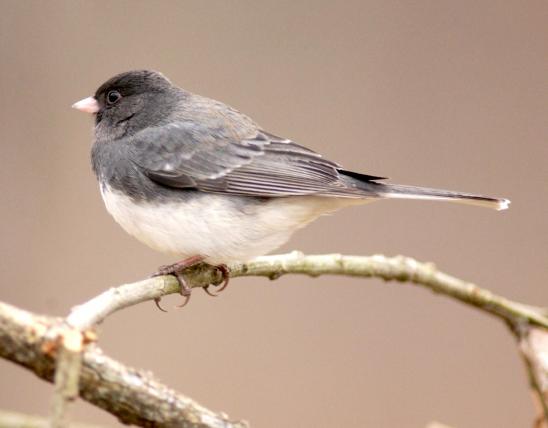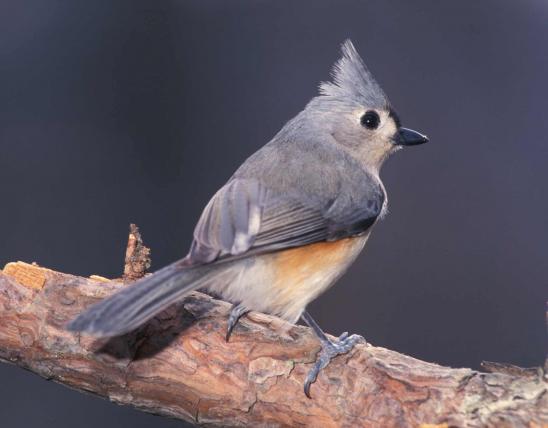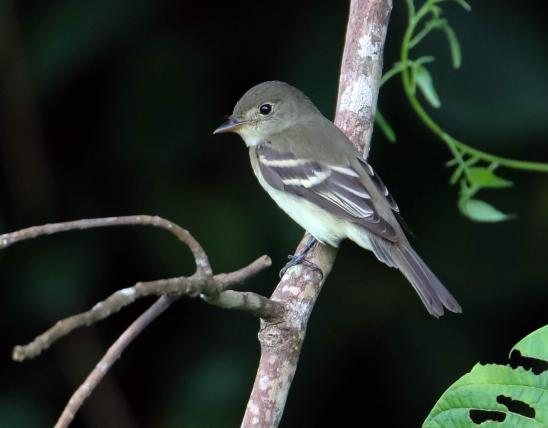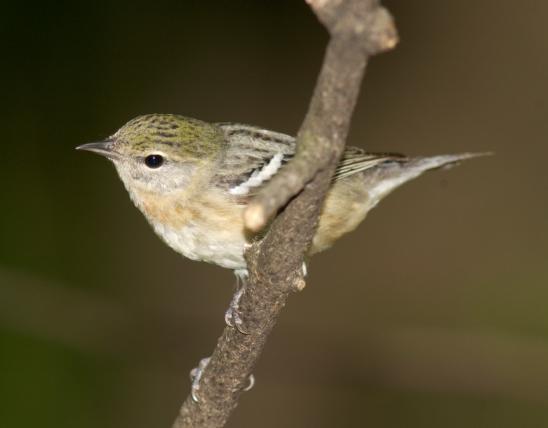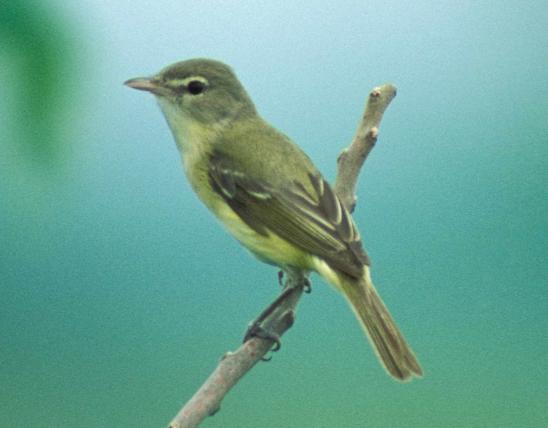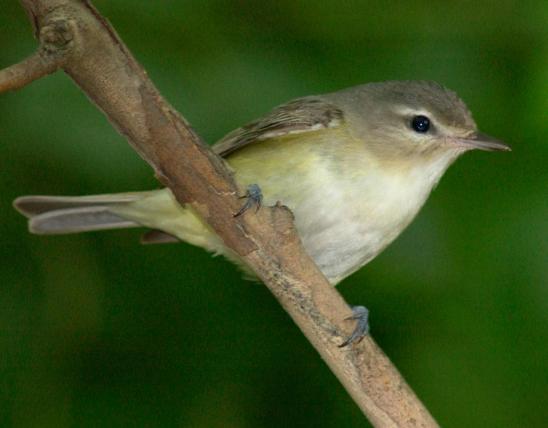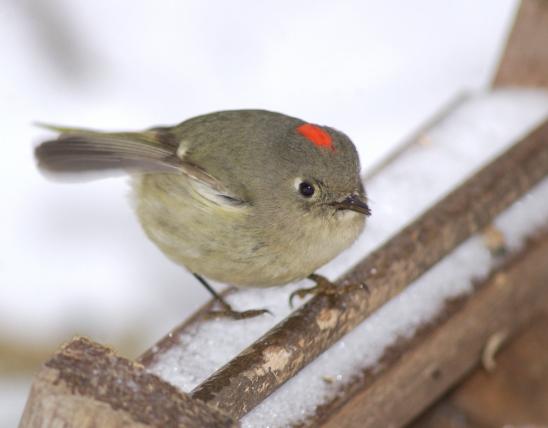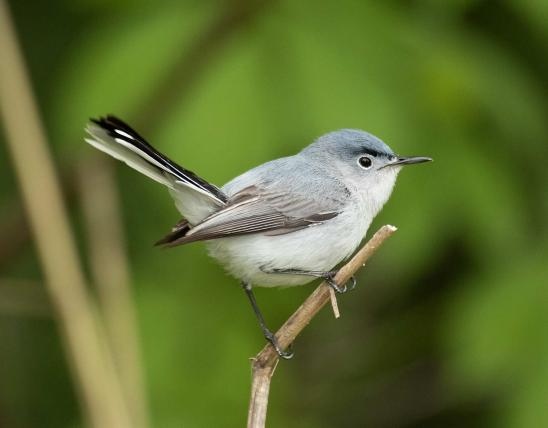
Eastern phoebe adults have brownish-gray upperparts with no wing bars, and white underparts. Bill is all black. A perky bird that bobs its tail repeatedly. Freshly molted birds in fall have yellowish underparts. This is the only flycatcher that occasionally winters in Missouri. Voice is a harsh, raspy, insistent FEE-bee! or FEE-b’dee! with the first syllable accented, slightly longer, and higher pitched. The call is often repeated many times.
Similar species: The eastern wood-pewee is smaller and thinner, has a pointier head that is not clearly darker than the other upperparts, has obvious white wing bars, does not bob its tail as much, and has a different call. Several groups of flycatchers are found in Missouri, including two pewees, two phoebes, three kingbirds, five in the genus Empidonax, the great crested flycatcher, and very rarely, the vermilion flycatcher. Voice and behavior usually are very helpful for distinguishing them.
Length: 7 inches (tip of bill to tip of tail).
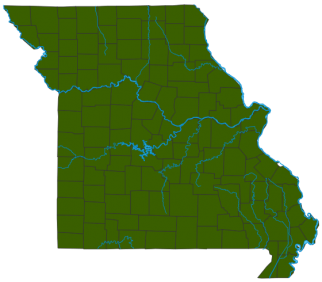
Uncommon breeder statewide and rare in winter in the Mississippi Lowlands.
Habitat and Conservation
Eastern phoebes are frequently observed near bridges, porches, barns, cliffs, and cave openings, where they nest and forage for flying insects. During the early spring and late fall they frequent areas near water, such as along a lakeshore, where emergences of insects are most likely to occur. Many people know phoebes because they often build their mud-and-plant nests on the side of a house, just under a roof or other overhang, and repeatedly cry out, “FEE-bee! FEE-bee!”
Food
Like other flycatchers, eastern phoebes perch in a place offering a clear view of the area around them. When an insect flies by, the phoebe flits out, snatches it from the air, then returns to the same perch. People have long appreciated the phoebe’s diet, which includes wasps, beetles (including weevils and cucumber beetles), moths and butterflies, dragonflies, and midges and other true flies, plus spiders, centipedes, and ticks. (Yes, ticks!) They also eat a small amount of fruits and seeds.
Status
As a summer resident, common statewide but rare in our southeastern counties. As a winter resident, rare in our extreme southern counties; casual elsewhere. The only flycatcher that sometimes winters in our state.
Life Cycle
This phoebe arrives in Missouri in March. The cup nests, composed of mud, moss, and plant materials, are adhered to buildings and bridges just under a roof or other sheltered niche. Prior to settlement, phoebes built their nests in crannies on cliff faces. A clutch comprises 2–6 eggs, which are incubated about 15 days. Fledging occurs 16–20 days after hatching. There are 1 or 2 broods a year. Eastern phoebes spend winters to our south and into Mexico; most leave our state in October.
Human Connections
Phoebes “earn their rent” near human homes by eating many insect pests. In Greek mythology, the goddess Phoebe prophesied the future and was the grandmother of Apollo and Artemis. Years ago, people heard this bird’s “FEE-bee!” call and fancied it was crying out the name of the Classical goddess!
Ecosystem Connections
Flycatchers are beautifully adapted for snapping flying insects out of the air, checking their numbers. They have sharp vision and are capable of performing fast, precision aerial maneuvers. Small bristly feathers on either side of the forceps-like bill help channel insects toward the mouth.
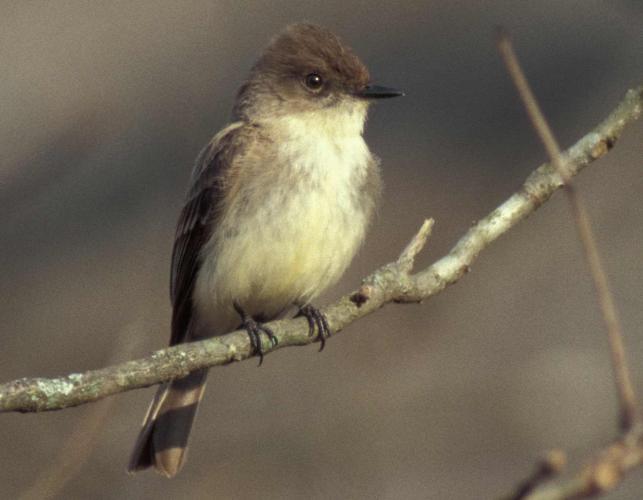
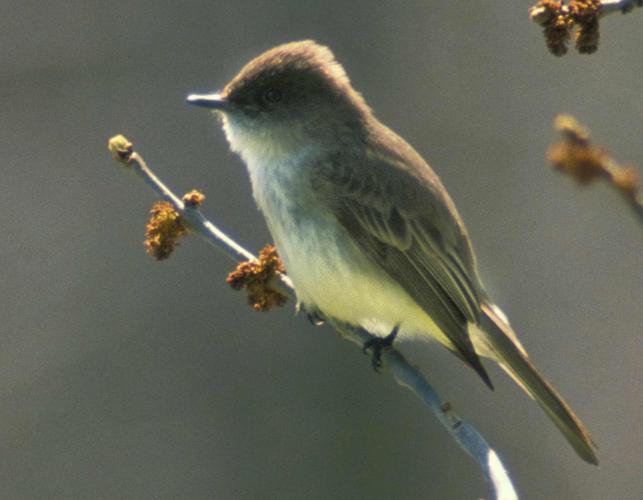
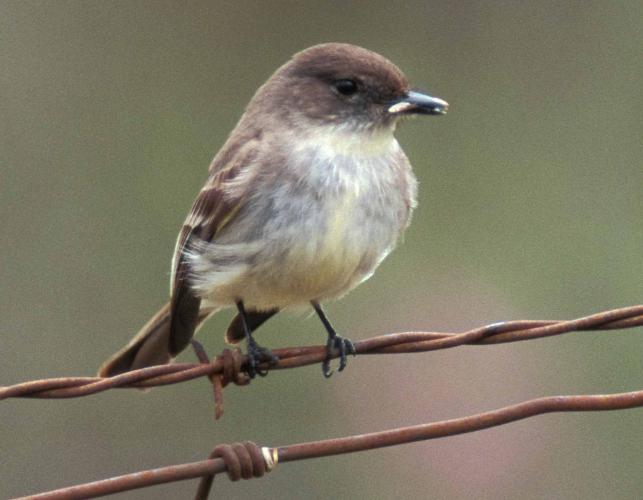
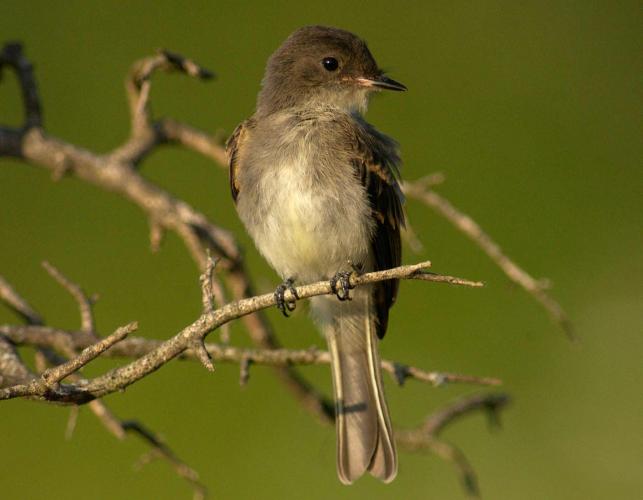
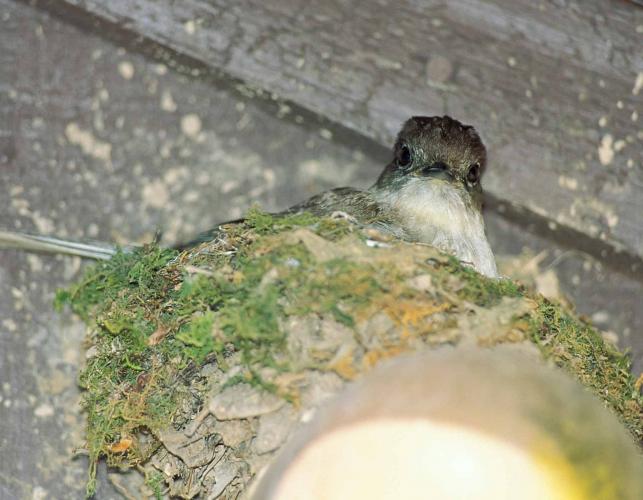
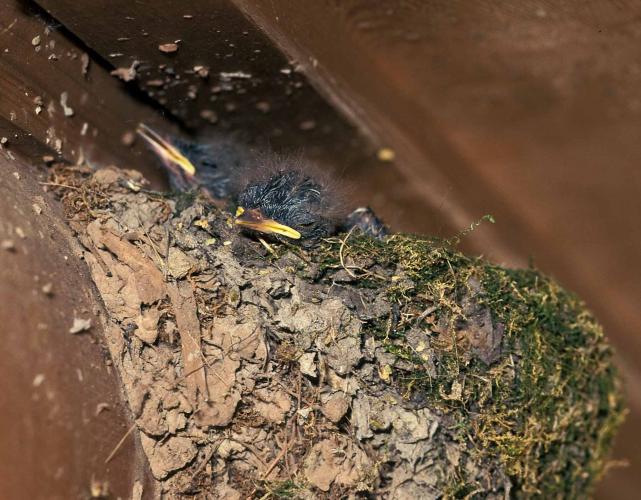
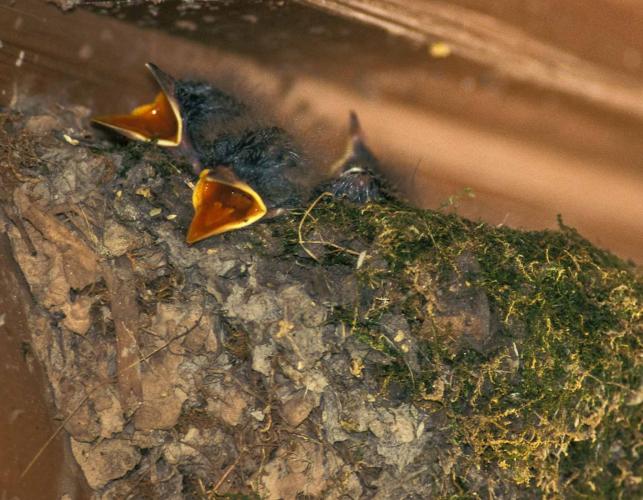
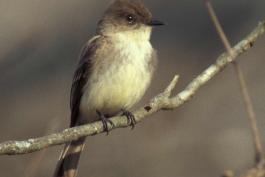
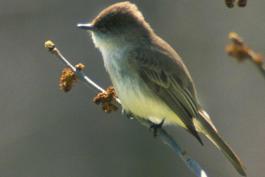
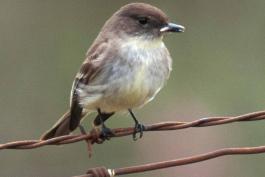
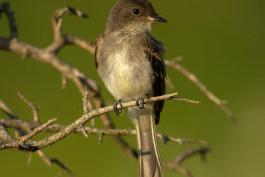
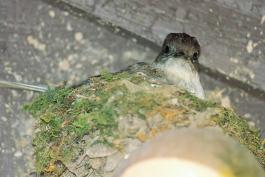
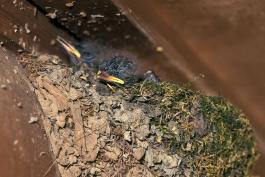
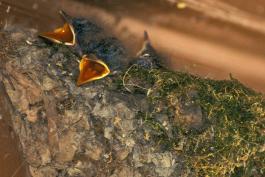
About 350 species of birds are likely to be seen in Missouri, though nearly 400 have been recorded within our borders. Most people know a bird when they see one — it has feathers, wings, and a bill. Birds are warm-blooded, and most species can fly. Many migrate hundreds or thousands of miles. Birds lay hard-shelled eggs (often in a nest), and the parents care for the young. Many communicate with songs and calls.






















